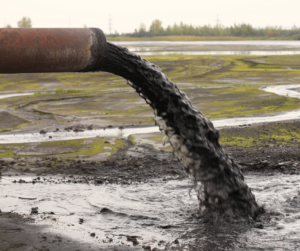Stone Mason Charleston SC work on construction sites where they are exposed to the elements and must use specialized tools. They are also required to read and understand technical blueprints and follow instructions from builders and architects.
Masons need excellent craftsmanship skills, a keen eye for detail, and physical strength to perform their job. They must also be certified to operate heavy machinery and cranes.

Stonemasonry has been one of civilization’s oldest trades. Over millennia stonemasons have carved, cut and assembled stone to produce shelters, temples, monuments, artifacts and entire cities. Some of the world’s most famous structures have been built by stone masons including Gobekli Tepe, the pyramids of Egypt and Angkor Wat.
The Renaissance saw a return to the old classical forms of building with Michelangelo Buonarroti planning and sculpting great works such as the Laurentian Library and Florence Cathedral. In modern times a stone mason is called upon to repair damage to existing buildings or to build new structures using traditional techniques and materials.
A modern stone mason may work in a workshop where they use tools to cut and carve the stone to the specifications provided by builders or other parties. This can include working from a drawing to create the exact shapes of stones that are then transferred to the construction site for assembly.
In the past stonemasons, like any other craftsmen, belonged to a guild. A new entrant to the trade would sign up for seven years of apprenticeship where they would be bound to a master mason and paid a pittance for their board and lodging. After this period they could become a journeyman mason and then a master mason after further training.
The role of a modern stone mason has changed greatly since the days of the guilds. A good stone mason needs to be a jack of all trades, able to do a little bit of everything. Modern stonemasons also need to be very physically fit and have a high level of attention to detail. This is because many of the tasks are still the same but have been made much easier by machinery. Cranes make lifting and moving heavy stones a lot less labor intensive while compressed air powered tools can do the cutting much quicker and with more precision than chiseling by hand.
Tools
The masonry profession demands heavy duty, durable tools to perform its tasks. Those a mason uses are typically made of metal and may include simple shaping tools for roughing out the stone and more advanced chisels for carving. In addition to these tools, masons often carry measuring devices to keep track of where a wall starts and ends.
A mason’s hammer is an indispensable tool for stonemasonry, with a long and thick implement that has a flat face and a chisel-like edge on one side. It is used to rough out the stone, cut it, and slam it to create a variety of shapes.
Trowels and floats are also essential masonry tools. A narrower trowel known as a margin trowel is used to apply mortar across small surfaces, while a v-notched trowel is better for applying mortar in the corners of a stone. A hammer drill is another common masonry tool, with a metal rod with a chisel-edged steel point on both ends. Masons and quarry workers use these to bore holes in rock for mining purposes.
Masons can also use other specialized tools, such as a stone saw to cut blocks of stone into specific shapes or sizes for construction projects. An angle grinder with a diamond blade is also useful for cutting through stone quickly and efficiently.
Some specialized masonry tools are more expensive than others, but they can save time and effort in the long run by making it easier to work with difficult or exotic materials. A mason that builds structures with mithral, for instance, does not have to worry about it suffering double damage from siege engines, though its cost will be higher (as per DM discretion). This type of structure is typically viewed as an investment and is often built by wealthy individuals or guilds.
Safety
Stonemasons must be aware of the risks associated with their work and take the appropriate safety measures to avoid injury. This includes wearing personal protective equipment such as safety goggles, ear protection and steel-toed boots. They must also ensure that their working area has good ventilation and that they are using dust-free tools. The risk of respiratory hazards is particularly significant, with exposure to stone dust causing irritation and resulting in long-term health issues like silicosis.
Accidents can be very serious and a slip, trip or fall can cause severe injuries in the construction industry. This is especially the case for stonemasons whose work requires them to operate at heights, such as on scaffolding or ladders.
Another significant risk for stone masons is the use of vibration-producing hand tools, which over time can damage the bones, muscles and tendons in their hands and arms. This can lead to pain and numbness, inability to hold objects securely and loss of sensation. In severe cases, these symptoms can spread to the shoulders and neck.
A stone mason must be able to move large slabs of stone, which can be very heavy. Depending on the type of rock, they may have faults and fissures that could lead to the stone cracking or shattering during or as a result of handling. This can be dangerous to other members of the building team who are not specialised in dealing with stonework.
Other potential risks include the dangers of working with chemicals and power tools that generate noise. Masons must wear ear protectors to prevent hearing loss and gloves to protect their hands from cuts and abrasions when working with stone materials and tools. They must follow all procedures outlined in the job hazard analysis and risk assessment they receive from their employer.
Working Conditions
Stone masons often work outdoors and can be exposed to all weather conditions on building sites. They may also work indoors in workshops and studios where they can create intricate stone carvings and sculptures. The work can be noisy, dusty and physically demanding, and it is important for stonemasons to wear appropriate personal protective equipment to prevent respiratory issues.
Stonemasons can specialise in a number of different types of work, including kitchen benchtops and bathroom vanities made from a variety of materials, commercial stone facades and masonry structures such as fireplaces and window frames, and restoration and repair work on historical landmarks and buildings. Some stonemasons can also be found working on cemetery projects, laying headstones and carving memorials. Other types of masonry work include working on stone flooring and tank and vat linings, as well as producing ornamental garden pieces and sculptural work.
The main job duties of a stone mason involve preparing, cutting and shaping various types of stone for use in a wide range of construction and masonry projects. Preparing stone involves cleaning it, identifying the natural grain and marking it for cutting. Cutting and shaping stone may involve using a saw, chisels or hammers. Some masons can also use heavy machinery to split large sheets of stone for use in building and construction projects.
The type of stone used in a project may be specified by the client or project designer. Some stone masons may also be responsible for interpreting blueprints or designs to work out the materials required, and they might also need to calculate quantities of stone to cut or shape. Some stonemasons can also work as quarrymen, sourcing and extracting different types of stone from the earth.
Training
A successful career in stone masonry requires a high level of physical fitness and a strong work ethic. Training usually takes the form of an apprenticeship, with students working alongside experienced bricklayers or masons and receiving classroom instruction on a variety of subjects, such as blueprint reading and construction layout.
Some stonemasons specialise in specific areas of the trade, allowing them to be more effective on construction sites and lowering costs. For instance, sawyer masons focus on refining rough chunks of stone to meet predetermined specifications. They work on larger chunks than banker masons, which allows them to achieve more complex shapes.
Masons also have the option of completing advanced qualifications, which can lead to promotion or new opportunities in the industry. Typical entry-level qualifications include a Level 1 Award in Masonry Operations and the Level 2 (NVQ) Diploma in Craft Stonemasonry.
Many stonemasons work for private clients, construction companies or national organisations like the National Trust. They might be commissioned to build cottages, country houses, cathedrals or other heritage buildings. They can also be employed by a local authority to build roads, pavements and bridges.
It’s important for stone masons to be well-trained and comfortable working in hazardous environments. They must be familiar with all relevant workplace safety procedures and understand that failure to follow these guidelines could put them or their colleagues in danger. While these rules may seem restrictive, they’re designed to protect workers from injury. CDK Stone stocks a wide range of tools and equipment to assist stone masons in their work, including diamond-tipped saws for cutting through tough materials. Visit our range here. Alternatively, contact our team for more information.


